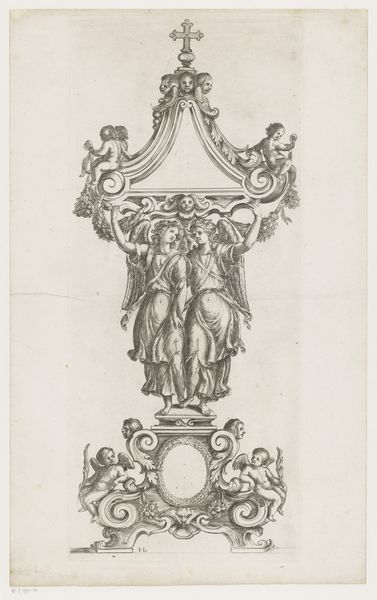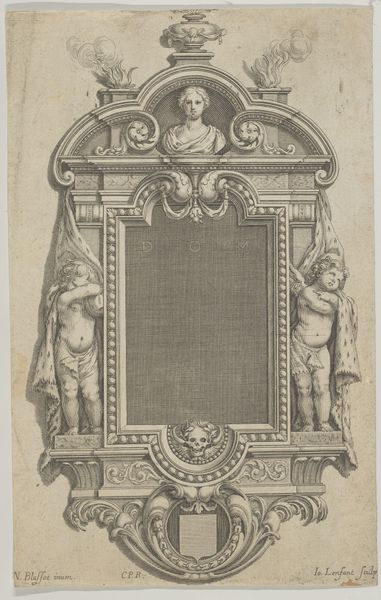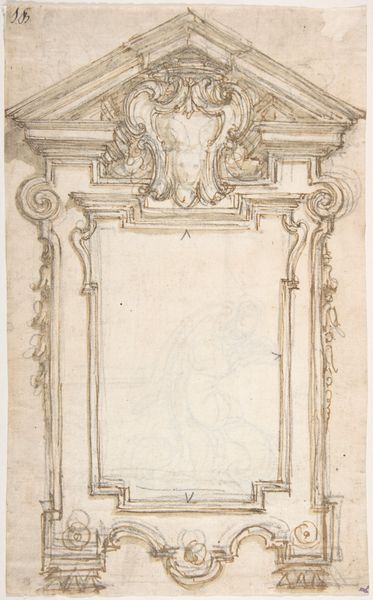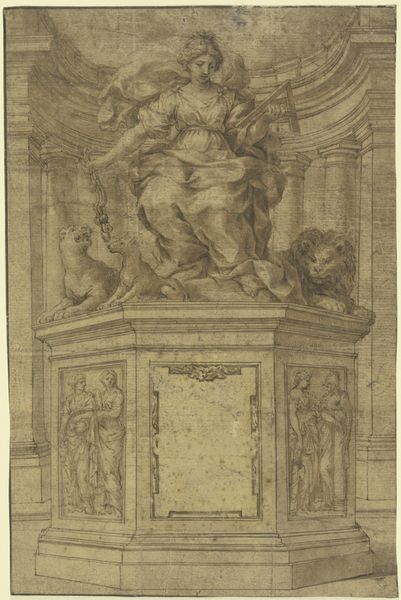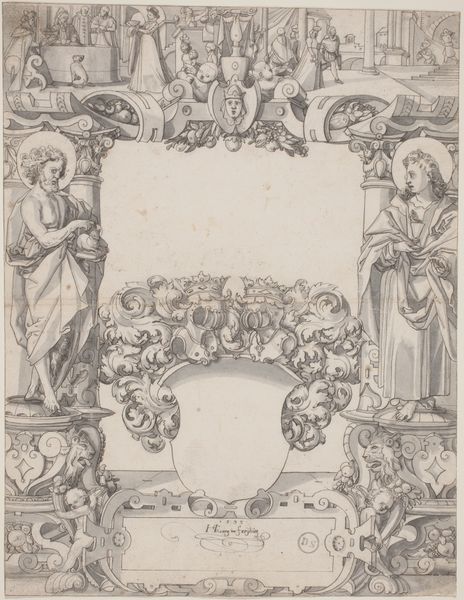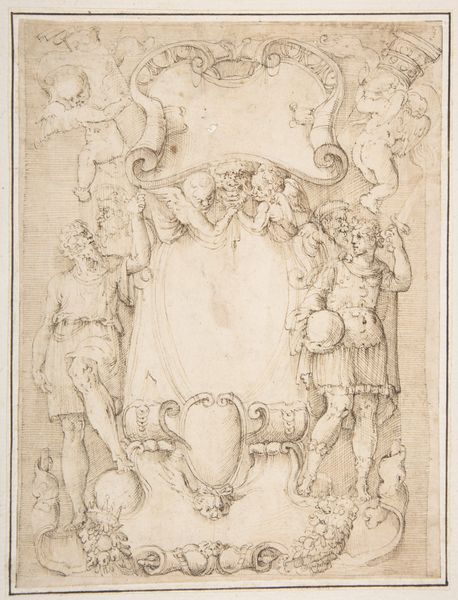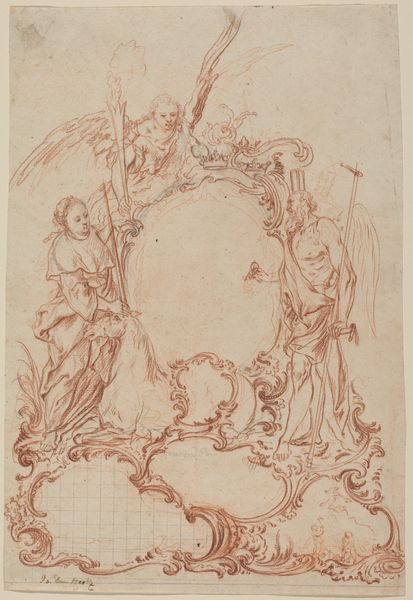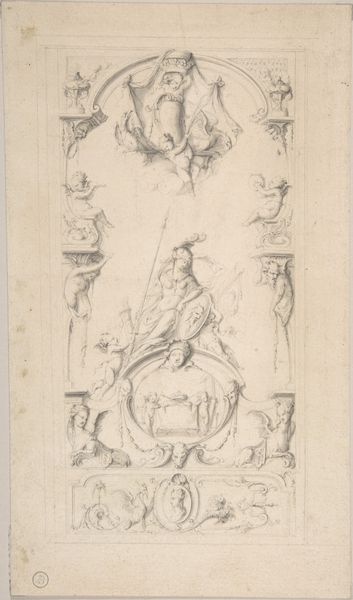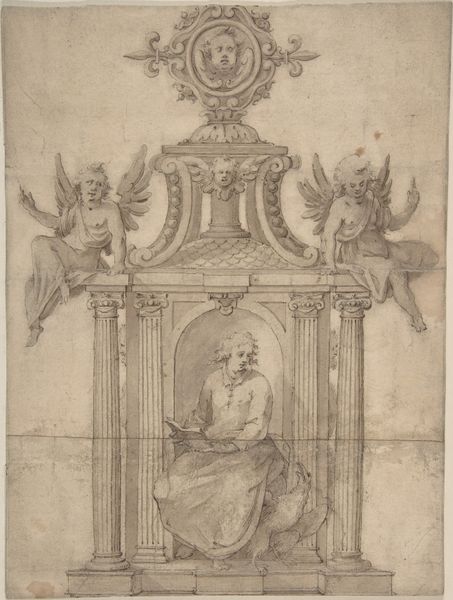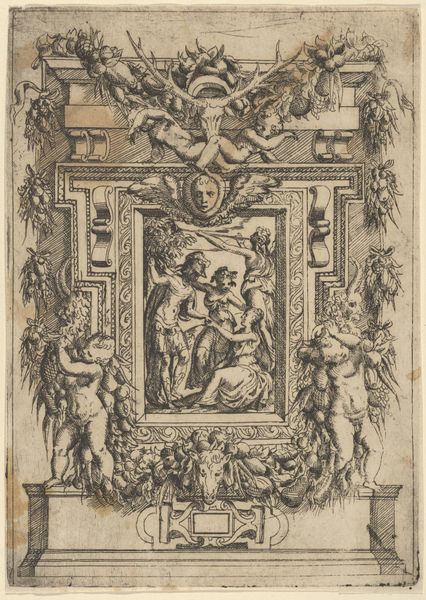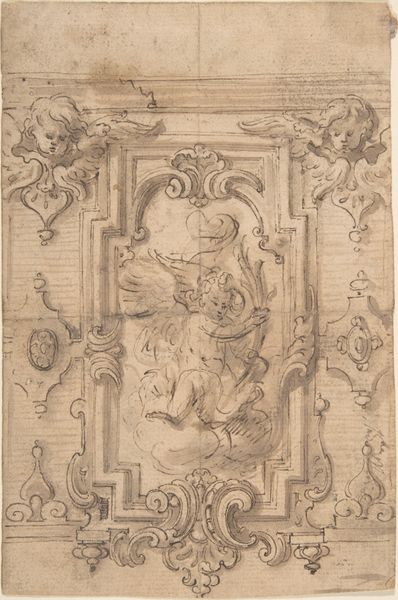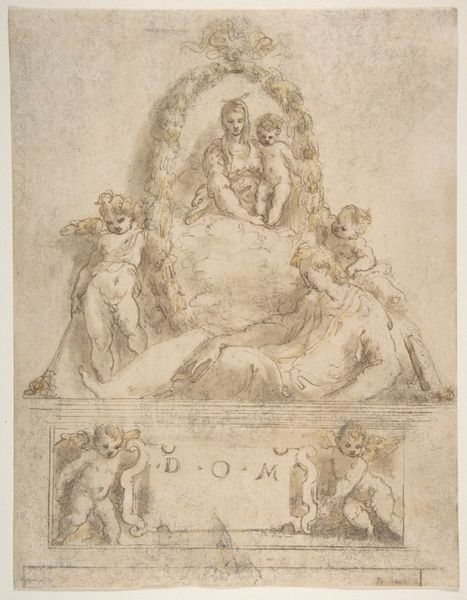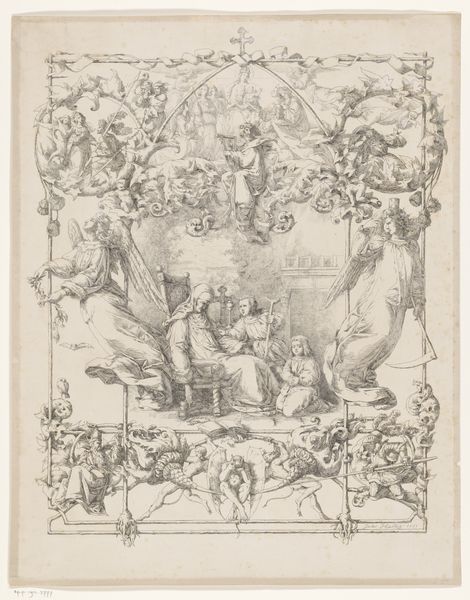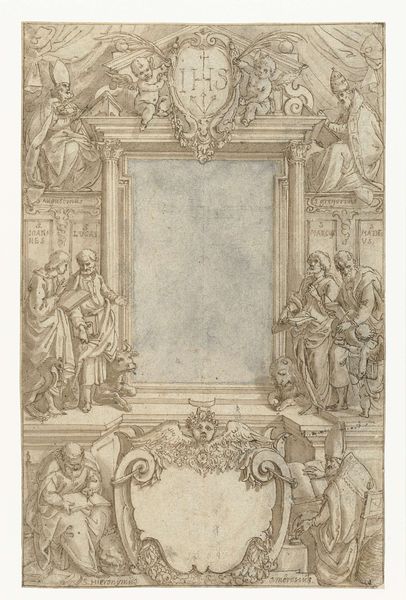
drawing, print, pencil
#
portrait
#
drawing
#
baroque
# print
#
figuration
#
pencil drawing
#
pencil
Dimensions: sheet: 7 1/4 x 5 1/2 in. (18.4 x 14 cm)
Copyright: Public Domain
Curator: Here we have "Cartouche between two cherubs on pedestals," a drawing rendered in pencil, dating back to somewhere between 1695 and 1705, currently residing at the Metropolitan Museum of Art. It’s by an anonymous hand, but its elegance is undeniable. Editor: It’s oddly comforting. Like finding an old, forgotten Valentine. There's a sweetness to the cherubs, but also a formal, almost architectural rigidity to the cartouche itself. Curator: Absolutely, that juxtaposition is quite deliberate. The cherubs, acting as classical supports or caryatids, introduce that sense of lively animation, contrasting the otherwise severe stone framework. Think of it as the Baroque period's love of contrasts at play. Editor: The cartouche seems to want to hold something sacred, a secret whispered down through generations. Is there a deeper meaning here, maybe beyond mere decoration? Curator: Cartouches, throughout history, have often been associated with power and status. They framed royal names in ancient Egypt, for example. By the Baroque period, they'd become ornate frames, often for coats of arms, important names, or symbolic devices meant to convey virtue or status. So, the very structure speaks to commemoration. Editor: The vacant cartouche makes me think about potential – like a frame awaiting its masterpiece. There is a melancholy about what is missing, like a space waiting to be filled with memory. Curator: Indeed, and that void also invites our interpretation, doesn't it? To see our own narratives reflected within that classical structure. The anonymity of the artist too makes you ponder on what the art can convey versus what the artist wants. Editor: I like that. So the real masterpiece becomes the one we bring ourselves. Thanks. Curator: The pleasure's all mine. The conversation is never complete without fresh eyes.
Comments
No comments
Be the first to comment and join the conversation on the ultimate creative platform.
